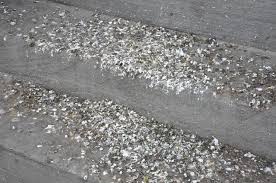
by Pigeon Patrol | Apr 22, 2020 | 4-S Gel Bird repellent, Animal Deterrent Products, Bird Deterrent Products, Bird Netting, Bird Spike, Bird Spikes, Pigeon Control, Pigeon Droppings, Pigeon Patrol's Services, Pigeon Spikes, Pigeons in the News, UltraSonic Bird Control
Feral pigeons roost cause damage to property. Pigeons roost on ledges and sloping roofs.

They:
- destroy insulation
- deface surfaces
- block pipes and gutters with droppings. Their droppings are acidic and eat away at buildings and machinery, which can lead to secondary damage such as wet rot
Pigeons also carry diseases which can prove fatal for humans and pose serious risks to public health, with the young and the old being especially vulnerable, such as:
- psittacosis, a type of pneumonia, which can kill
- candida albicans which can be the cause of skin diseases
- shigella species causes vomiting and diarrhoea
- ornithosis, a flu-like disease borne by birds
- chiamdiosis, a virus similar to influenza
- campylobacter coli, which may cause food poisoning
- pigeons roost with droppings and dead carcasses can contain a variety of mites and insects which can cause allergic reactions in humans
A pigeon’s perspective
Although feeding pigeons might appear to be a kind act, it is not. Food such as bread and cake gives them diarrhoea and induces vitamin B and calcium deficiency. Vitamin B deficiency can cause paralysis in pigeons. Pigeons are scavengers and are well equipped to find their own sources of food.
Food supplied by the public leads to the arrival of more pigeons and increased breeding rates. Feral pigeons deprive other birds of food and spread mites and other parasites throughout their ever-increasing number of breeding sites.
Licensed pest control contractors need to be hired to exterminate and control pigeons. The kindest and most economic way of achieving this is to allow pigeons to continue their natural feeding habits by taking away their dependence on food from people.
Rats
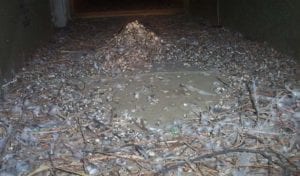
When food is left out for pigeons it is also left for rats. As with pigeons, the more food rats have access to, the more they will breed. Rats are a major health hazard. They contaminate human food with:
- their droppings
- urine
- hair
They are the carriers of many diseases eg. Weil’s disease and salmonellosis. Rats also cause structural damage. They burrow under the foundations of buildings and damage drains and sewers. They also gnaw through electrical cables which is a fire hazard.
What can you do?
- avoid feeding pigeons and allow them to pursue a natural life of foraging for food
- food litter should never be left on the ground
- ensure that all food waste is contained within enclosed waste bins
- if you wish to feed birds, prepare birdseed and place on bird tables where a variety of species can gain access
- it is sometimes possible to scare pigeons away letting them know that a location is not a suitable nesting site. Placing a piece of string with silver foil attached in the allotted area has worked in some instances
Professional pest controllers may be able to prevent pigeons landing on roofs, balconies and other areas by utilizing many of the products available in pigeon proofing.
At Pigeon Patrol, we manufacture and offer a variety of bird deterrents, ranging from Ultra-flex Bird Spikes with UV protection, Bird Netting, 4-S Gel and the best Ultrasonic and audible sound devices on the market today.
Contact us at 1- 877– 4– NO-BIRD, (604) 585-9279 or visit our website at www.pigeonpatrol.ca
Bird Gone, Pigeon Gone, Seagull Gone, Pigeon problems, pigeon spikes, 1-877-4NO-BIRD, 4-S Gel, Bird Control, Pigeon Control, bird repellent, Bird Spikes, sonic bird repellent, stainless steel bird spikes, bird spikes Vancouver, Ultra Sonic Bird Control, Bird Netting, Plastic Bird Spikes, Canada bird spike deterrents, Pigeon Pests, B Gone Pigeon, Pigeon Patrol, pest controller, pest control operator, pest control technician, Pigeon Control Products, humane pigeon spikes, pigeon deterrents, pigeon traps, Pigeon repellents, Sound & Laser Deterrents, wildlife control, raccoon, skunk, squirrel deterrent, De-Fence Spikes, Dragons Den, Canada bird spikes, Canada pigeon, pigeon control, pidgon patrol, pidgon. Kill pigeons, crow, starling
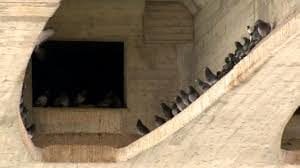
by Pigeon Patrol | Apr 22, 2020 | 4-S Gel Bird repellent, Animal Deterrent Products, Bird Deterrent Products, Bird Netting, Bird Spike, Bird Spikes, Pigeon Control, Pigeon Droppings, Pigeon Patrol's Services, Pigeon Spikes, Pigeons in the News, UltraSonic Bird Control
Pigeons Destroy Bridges and Can Kill People with Over 30 Contagious Diseases: Construction Workers that Re-Paint Bridges, Decontamination Workers, Farmers, and Local Residents
This disease is very dangerous to workers and nearby residents. Dusts containing H. capsulatum spores can be aerosolized during construction, excavation, or demolition. Once airborne, spores can be carried easily by wind currents over long distances.
Such contaminated airborne dusts can cause infections not only in persons at a work site, but also in others nearby. Such activities were suggested as the causes of the three largest outbreaks of histoplasmosis ever recorded. All three outbreaks took place in

Pigeons underneath bridge
Indianapolis, Indiana. During the first outbreak, in the fall of 1978 and spring of 1979, an estimated 120,000 people were infected, and 15 people died. The second outbreak, in 1980, was similar to the first in the number of people affected. AIDS patients accounted for nearly 50% of culture-proven cases during the third outbreak, in 1988.
- Pigeons poop destroy bridges. Pigeons roost under bridges and their poop or droppings are salty and acidic to steel and concrete.
- Pigeon poop or droppings contain many deadly diseases easily contracted by workers who clean and remove pigeon droppings. Construction workers that have to clean pigeon droppings from under the bridges can contract deadly diseases by just breathing “poop air”. Bridge re-painting construction workers need to be protected by bio-hazard suits when working near these deadly diseases. Any laborer who has to clean pigeon poop should be protected from the 30 fungal, viral, and bacterial diseases in pigeon poop. Pigeons are natural bioterrorists with their airborne diseases causing 120,000 cases of Histoplasmosis in Indianapolis in 1978-79 and another 120,000 in 1980 in the same city. 15 people died.
- Pigeons consume and contaminate large quantities of food destined for human or livestock consumption.
- Pigeons located around airports can also be a threat to human safety because of potential bird-aircraft collisions, and are considered a medium priority hazard to jet aircraft by the US Air Force.
- Children need to be taught the dangers of pigeon roosts and their deadly diseases.
About Pigeon Patrol
Pigeon Patrol Products & Services is the leading manufacturer and distributor of bird deterrent (control) products in Canada. Pigeon Patrol products have solved pest bird problems in industrial, commercial, and residential settings since 2000, by using safe and humane bird deterrents with only bird and animal friendly solutions.
At Pigeon Patrol, we manufacture and offer a variety of bird deterrents, ranging from Ultra-flex Bird Spikes with UV protection, Bird Netting, 4-S Gel and the best Ultrasonic and audible sound devices on the market today.
Contact us at 1- 877– 4– NO-BIRD, (604) 585-9279 or visit our website at www.pigeonpatrol.ca
Bird Gone, Pigeon Gone, Seagull Gone, Pigeon problems, pigeon spikes, 1-877-4NO-BIRD, 4-S Gel, Bird Control, Pigeon Control, bird repellent, Bird Spikes, sonic bird repellent, stainless steel bird spikes, bird spikes Vancouver, Ultra Sonic Bird Control, Bird Netting, Plastic Bird Spikes, Canada bird spike deterrents, Pigeon Pests, B Gone Pigeon, Pigeon Patrol, pest controller, pest control operator, pest control technician, Pigeon Control Products, humane pigeon spikes, pigeon deterrents, pigeon traps, Pigeon repellents, Sound & Laser Deterrents, wildlife control, raccoon, skunk, squirrel deterrent, De-Fence Spikes, Dragons Den, Canada bird spikes, Canada pigeon, pigeon control, pidgon patrol, pidgon. Kill pigeons, crow, starling

by Pigeon Patrol | Apr 22, 2020 | 4-S Gel Bird repellent, Animal Deterrent Products, Bird Deterrent Products, Bird Netting, Bird Spike, Bird Spikes, Pigeon Control, Pigeon Droppings, Pigeon Patrol's Services, Pigeon Spikes, Pigeons in the News, UltraSonic Bird Control
Officials investigating the deadly Minneapolis bridge collapse are looking at an unlikely culprit: pigeons.
pigeons collapse bridge ?Of all the possible causes of the deadly collapse of Minnesota’s Interstate 35W bridge earlier this month– uneven traffic patterns, de-icing salts, faulty construction–the latest is the most surprising: Pigeons. Or more precisely, the waste the birds leave behind. “Pigeon dung can be a serious issue–it’s acidic and will easily eat away almost any metal,” explains engineer William Schutt, president of Matcor, a corrosion protection firm in Doylestown, Pa. “It can wash into and then rust the bolts and rivets of bridges if they’re not cleaned and checked properly.” The build-up of pigeon excrement on the I-35W bridge was substantial enough to be noted in several Minnesota Department of Transportation inspections over the years, pointing to the steel box sections of the bridge as a popular nesting spot. Those sections are crucial to supporting the structure, and in 1999 bridge workers placed plastic screens over openings in the beams in an effort to repel the birds. But the dung continued to pile up. A 2006 inspection of the bridge still reported “severe pigeon debris” on its steel deck truss. Corrosive pigeon dung also made it hard for bridge inspectors to do their work. Three experts familiar with the I-35W bridge told the Minneapolis Star Tribune that some of the impediments to inspections of the collapsed bridge included piles of pigeon dung, poor lighting, road rage (commuters upset with delays were known to insult inspectors and even occasionally throw objects at them) and spider webs that could resemble metal cracks.
About Pigeon Patrol
Pigeon Patrol Products & Services is the leading manufacturer and distributor of bird deterrent (control) products in Canada. Pigeon Patrol products have solved pest bird problems in industrial, commercial, and residential settings since 2000, by using safe and humane bird deterrents with only bird and animal friendly solutions.
At Pigeon Patrol, we manufacture and offer a variety of bird deterrents, ranging from Ultra-flex Bird Spikes with UV protection, Bird Netting, 4-S Gel and the best Ultrasonic and audible sound devices on the market today.
Contact us at 1- 877– 4– NO-BIRD, (604) 585-9279 or visit our website at www.pigeonpatrol.ca
Bird Gone, Pigeon Gone, Seagull Gone, Pigeon problems, pigeon spikes, 1-877-4NO-BIRD, 4-S Gel, Bird Control, Pigeon Control, bird repellent, Bird Spikes, sonic bird repellent, stainless steel bird spikes, bird spikes Vancouver, Ultra Sonic Bird Control, Bird Netting, Plastic Bird Spikes, Canada bird spike deterrents, Pigeon Pests, B Gone Pigeon, Pigeon Patrol, pest controller, pest control operator, pest control technician, Pigeon Control Products, humane pigeon spikes, pigeon deterrents, pigeon traps, Pigeon repellents, Sound & Laser Deterrents, wildlife control, raccoon, skunk, squirrel deterrent, De-Fence Spikes, Dragons Den, Canada bird spikes, Canada pigeon, pigeon control, pidgon patrol, pidgon. Kill pigeons, crow, starling
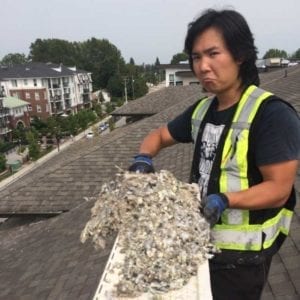
by Pigeon Patrol | Apr 22, 2020 | 4-S Gel Bird repellent, Animal Deterrent Products, Bird Deterrent Products, Bird Netting, Bird Spike, Bird Spikes, Pigeon Control, Pigeon Droppings, Pigeon Patrol's Services, Pigeon Spikes, Pigeons in the News, UltraSonic Bird Control
Workers need PPE to protect against all kinds of hazards. Of course, your employees probably don’t need protection against pigeon poop. But since you never know…
City employees need to access a confined space in a pedestrian bridge to work on an electrical conduit. Pigeons have gotten into this space, leaving poop and other debris. What PPE should these employees be provided for protection against pigeon poop?
Our high-flying experts informed the questioner that pigeon droppings can expose workers to serious conditions, including histoplasmosis and cryptococcosis. Citing a NIOSH publication, they noted that disposable protective clothing and shoe coverings should be worn whenever regular work clothing and shoes might be contaminated with dust-containing, disease-carrying spores. Wearing such clothing can reduce or eliminate the likelihood of transferring spore-contaminated dust to places away from work, like a car or one’s home.
When spore-contaminated material is likely to fall from overhead, NIOSH recommends that workers wear disposable protecting clothing with hoods. They should also use disposable shoe coverings with ridged soles made of slip-resistant material to reduce the likelihood of slipping on wet or dusty surfaces.
After working in such an environment and before removing respirators, personnel should remove all protective clothing and shoe coverings and seal them in heavy-duty plastic bags for disposal in a landfill.
Using the proper PPE to tackle pigeon poop in a confined space can impede essential sweat evaporation. NIOSH recommends taking precautions to control heat stress in these situations. For example, when protective clothing is needed, wearing a lightweight, cotton coverall would create less of a heat-stress risk than wearing a chemical-resistant suit. Workers should know the symptoms of heat-stress-related conditions and be able to take measures before serious problems develop.
About Pigeon Patrol
Pigeon Patrol Products & Services is the leading manufacturer and distributor of bird deterrent (control) products in Canada. Pigeon Patrol products have solved pest bird problems in industrial, commercial, and residential settings since 2000, by using safe and humane bird deterrents with only bird and animal friendly solutions.
At Pigeon Patrol, we manufacture and offer a variety of bird deterrents, ranging from Ultra-flex Bird Spikes with UV protection, Bird Netting, 4-S Gel and the best Ultrasonic and audible sound devices on the market today.
Contact us at 1- 877– 4– NO-BIRD, (604) 585-9279 or visit our website at www.pigeonpatrol.ca
Bird Gone, Pigeon Gone, Seagull Gone, Pigeon problems, pigeon spikes, 1-877-4NO-BIRD, 4-S Gel, Bird Control, Pigeon Control, bird repellent, Bird Spikes, sonic bird repellent, stainless steel bird spikes, bird spikes Vancouver, Ultra Sonic Bird Control, Bird Netting, Plastic Bird Spikes, Canada bird spike deterrents, Pigeon Pests, B Gone Pigeon, Pigeon Patrol, pest controller, pest control operator, pest control technician, Pigeon Control Products, humane pigeon spikes, pigeon deterrents, pigeon traps, Pigeon repellents, Sound & Laser Deterrents, wildlife control, raccoon, skunk, squirrel deterrent, De-Fence Spikes, Dragons Den, Canada bird spikes, Canada pigeon, pigeon control, pidgon patrol, pidgon. Kill pigeons, crow, starling
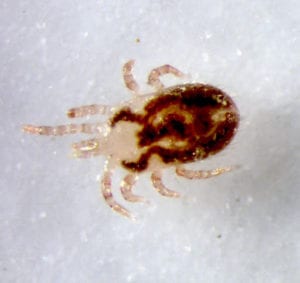
by Pigeon Patrol | Apr 1, 2020 | 4-S Gel Bird repellent, Animal Deterrent Products, Bird Deterrent Products, Bird Netting, Bird Spike, Bird Spikes, Pigeon Control, Pigeon Droppings, Pigeon Patrol's Services, Pigeon Spikes, Pigeons in the News, UltraSonic Bird Control
Human infestation with bird mite, but What are bird mites?
Bird mites are found in the warmer regions of the world, including Australia.
There are several species of bird mite but the most common species affecting humans is the domestic Starling mite, Ornithonyssus bursa from the family Macronyssidae.
Bird mites are:
- small (less than 1mm long) mites with 8 legs
- very mobile
- semi-transparent in colour until blood has been digested when they appear reddish to blackish
- oval in shape with a sparse covering of short hair.
Bird mites are naturally found where birds (such as pigeons, starlings, sparrows and poultry) and their nests are located.
However, in the first few weeks after birds leave their nests, bird mites may infest homes in search of a blood-meal from humans. Bites from bird mites can cause severe irritation.
This is a report of a case of bird mite infestation which occurred in Wollongong in mid-December 1996. The individual suffered hundreds of bites, most of which were marked by itchy red papules 3-4 mm in diameter. Tiny mobile parasites (< 1 mm) collected from the skin and adjacent bedroom wall were identified as bird mites from the family Gamasidae, most probably from the genus Ornithonyssus. The source of the infestation was a starling nest under the eaves adjacent to the bedroom. The report summarises the ways bird mite bites can be distinguished from other insect and arachnid bites. If bird mite infestation is not correctly diagnosed, families who attempt to repeatedly treat it as if it were lice or scabies may incur considerable expense until the source of infestation is eliminated.

Source
At Pigeon Patrol, we manufacture and offer a variety of bird deterrents, ranging from Ultra-flex Bird Spikes with UV protection, Bird Netting, 4-S Gel and the best Ultrasonic and audible sound devices on the market today.
Contact us at 1- 877– 4– NO-BIRD, (604) 585-9279 or visit our website at www.pigeonpatrol.ca
Bird Gone, Pigeon Gone, Seagull Gone, Pigeon issue, pigeon spikes, 1-877-4NO-BIRD, 4-S Gel, Bird Control, Pigeon Control, bird repellent, Bird Spikes, sonic bird repellent, stainless steel bird spikes, bird spikes Vancouver, Ultra Sonic Bird Control, Bird Netting, Plastic Bird Spikes, Canada bird spike deterrents, Pigeon Pests, B Gone Pigeon, Pigeon Patrol, pest controller, pest control operator, pest control technician, Pigeon Control Products, humane pigeon spikes, pigeon deterrents, pigeon traps, Pigeon repellents, Sound & Laser Deterrents, wildlife control, raccoon, skunk, squirrel deterrent, De-Fence Spikes, Dragons Den, Canada bird spikes, Canada pigeon, pigeon control, pigeon patrol, pigeon. Kill pigeons, crow, starling








